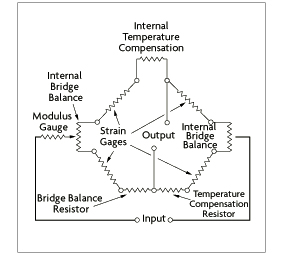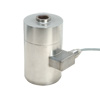Toll-Free in Thailand:
001 800 441 0237
International+65 6415 5353

 Compression Load Cells
Compression Load Cells
 Compression/Tension Load Cells
Compression/Tension Load Cells
 S-Beam Load Cells
S-Beam Load Cells
 Bending Beam Load Cells
Bending Beam Load Cells
 Platform and Single Point Load Cells
Platform and Single Point Load Cells
 Canister Load Cells
Canister Load Cells
 Low Profile Load Cells
Low Profile Load Cells
| Type | Weight Range | Accuracy (FS) | Apps | Strength | Weakness | |
| Mechanical Load Cells | ||||||
| Hydraulic Load Cells | Up to 10,000,000 lb | 0.25% | Tanks, bins and hoppers. Hazardous areas. |
Takes high impacts, insensitive to temperature. |
Expensive, complex. | |
| Pneumatic Load Cells | Wide | High | Food industry, hazardous areas | Intrinsically safe. Contains no fluids. |
Slow response. Requires clean, dry air |
|
| Strain Gage Load Cells | ||||||
| Bending Beam Load Cells | 10-5k lbs. | 0.03% | Tanks, platform scales, | Low cost, simple construction | Strain gages are exposed, require protection |
|
| Shear Beam Load Cells | 10-5k lbs. | 0.03% | Tanks, platform scales, off- center loads |
High side load rejection, better sealing and protection |
||
| Canister Load Cells | to 500k lbs. | 0.05% | Truck, tank, track, and hopper scales | Handles load movements | No horizontal load protection | |
| Ring and Pancake Load Cells | 5- 500k lbs. | Tanks, bins, scales | All stainless steel | No load movement allowed | ||
| Button and washer Load Cells |
0-50k lbs 0-200 lbs. typ. |
1% | Small scales | Small, inexpensive | Loads must be centered, no load movement permitted |
|
| Other Load Cells | ||||||
| Helical | 0-40k lbs. | 0.2% | Platform, forklift, wheel load, automotive seat weight |
Handles off-axis loads, overloads, shocks |
||
| Fiber optic | 0.1% | Electrical transmission cables, stud or bolt mounts |
Immune to RFI/EMI and high temps, intrinsically safe |
|||
| Piezo- resistive |
0.03% | Extremely sensitive, high signal output level |
High cost, nonlinear output | |||

↓ View this page in another language or region ↓